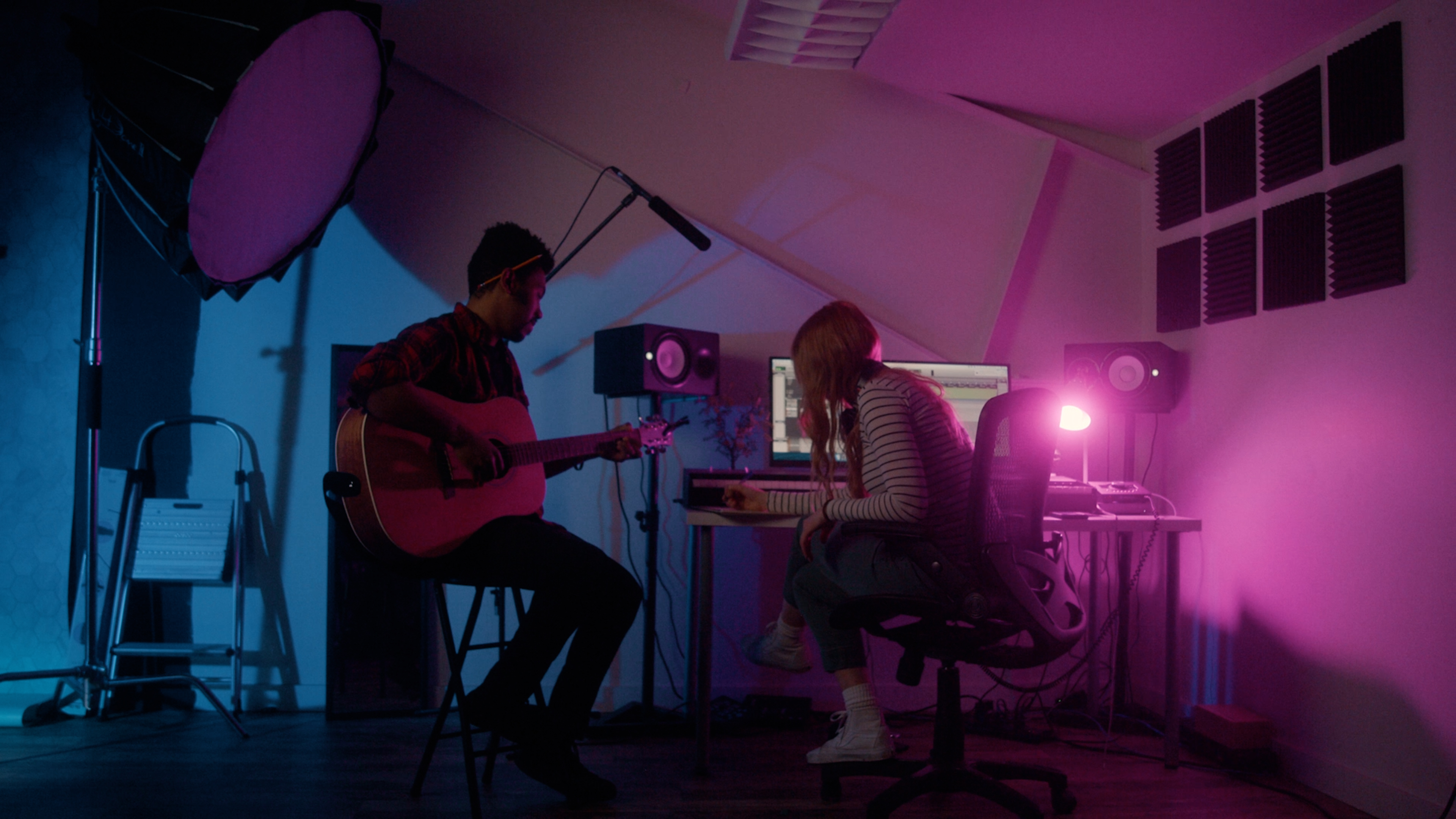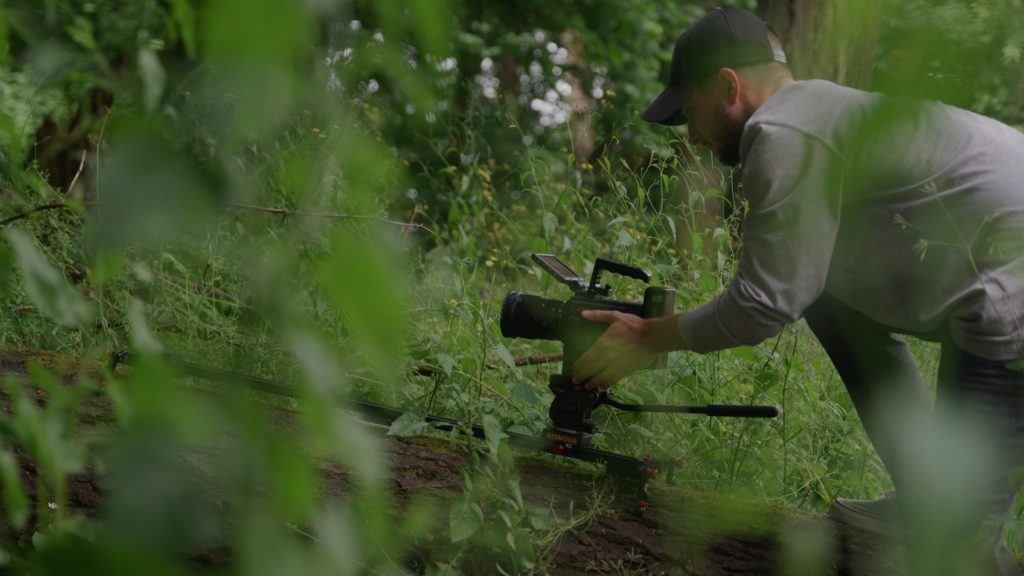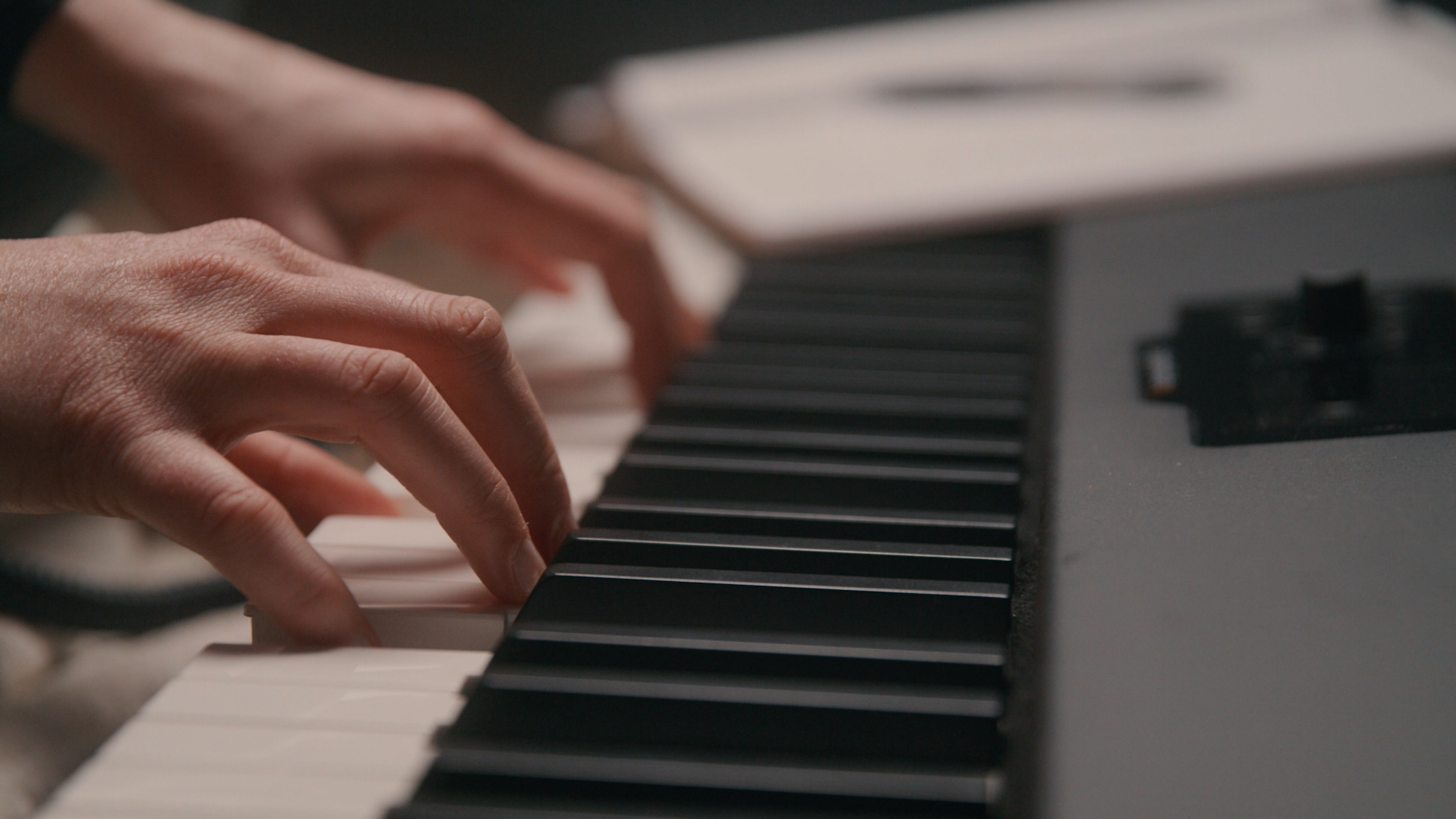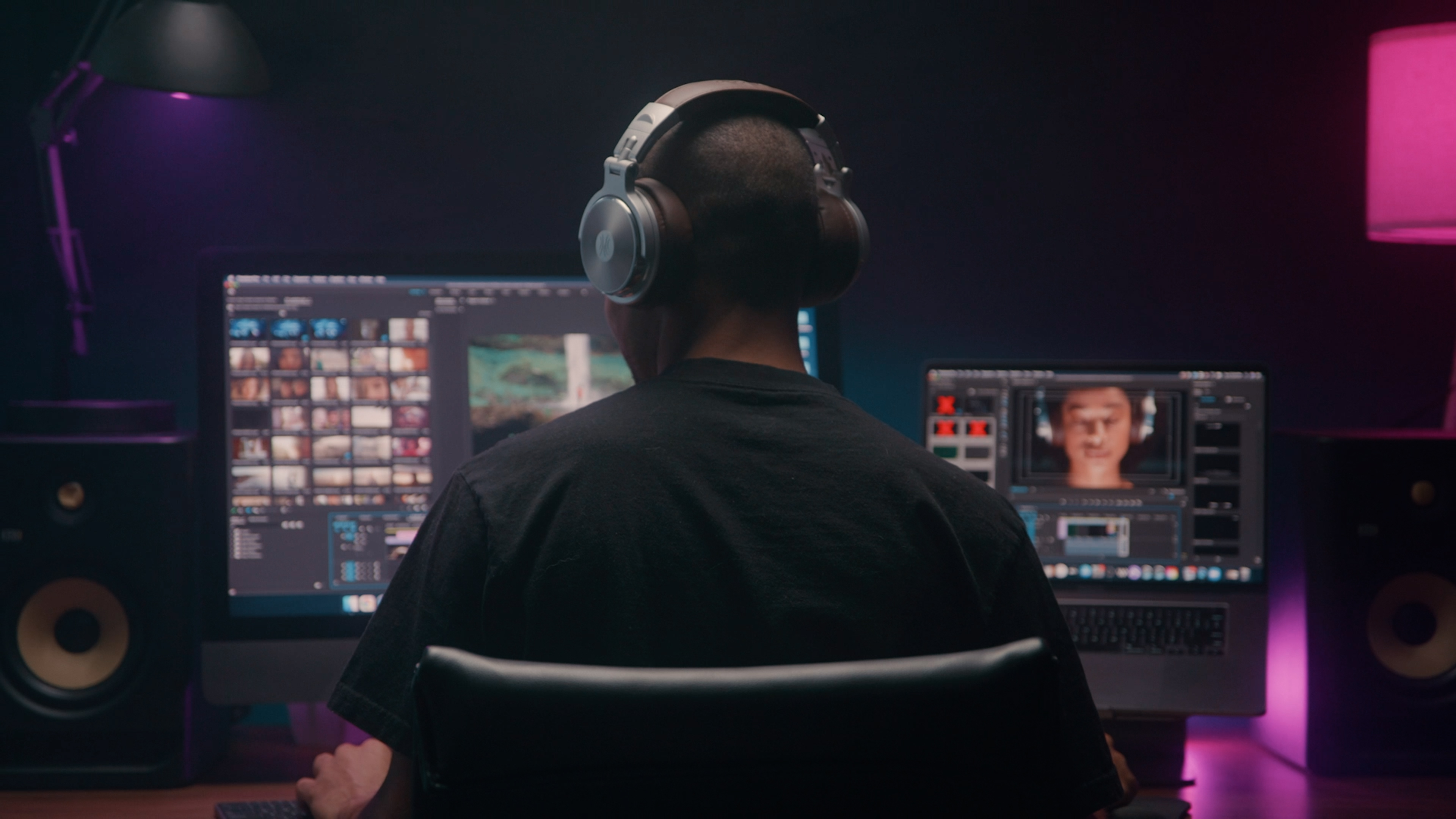
4 Things To Know When Hiring A Composer
I’ve had the unique dual experience of being both a filmmaker and composer. And I’ve used this knowledge to develop these tips.
Continue ReadingNo matter what, if you want to record audio, you’ll need a microphone. But there are so many types of mics out there; which should you use for audio recording in video production?
Today, we’re going to list the most common types of mics used in filmmaking, as well as their strengths and weaknesses when it comes to capturing quality audio for your post-production.

Typically used in a shock mount on either a camera or a boom pole, the shotgun microphone (sometimes called a boom mic) is one of the most popular types of production microphone.
These condenser mics have an extremely narrow pickup pattern, which means that they’re great at recording the things they’re pointed at, and minimizing noise coming from elsewhere (a perk of any directional microphone).
A shotgun mic is usually going to deliver a higher-quality sound than other production mics, such as lavs.
Shotgun mics are also ideal for documentaries and other run-and-gun situations where you won’t have time to wire up the talent, or if you’re trying to capture natural sounds. Windscreens help keep wind noise to a minimum when moving the mic.
However, if your talent or sound source has to be far away from the camera or boom pole, or if your recorder doesn’t have phantom power (most do), these condenser microphones just won’t work as well.

Lavalier mics, also called wires or wireless microphones, are the other common-go-to microphone on set.
These versatile systems usually consist of a receiver and a transmitter, into which the small microphone is connected. The transmitter is placed on the belt or in the pocket of the talent, and the receiver is mounted on the camera or field recorder, feeding the audio via XLR.
Lavalier microphones excel in situations where the talent is moving, far away from the camera, or if there are several people talking on-camera. They’re also commonly used as backups to shotgun mics.
When there is a lot of radio interference nearby, or if the subject is wearing noisy or tight clothing, lavs aren’t a great choice.
Most lavs will deliver decent audio, but it will usually not be as high-quality as a shotgun mic.

Also known as studio or vocal mics, these types of mics are commonly used in controlled settings such as voiceover booths and podcast studios. There are both dynamic and condenser options. In a vacuum, these mics tend to have the best sound quality and frequency response.
These types of mics pick up everything, which means they are meant for quiet environments where the sound source (usually a voice) can be very close. The classic, rich, deep voiceover sound is almost always a product of these types of mics.
The downside is that these mics are often fragile, difficult to conceal, and pick up a lot of noise (most are omnidirectional or cardioid mics, as opposed to supercardioid or hypercardioid polar pattern), which makes using them in the field very difficult.

Portable field recorders have been a staple of sound designers for several years. Usually containing a stereo pair of microphones, these devices allow for quick, quality recordings in the field.
These recorders are perfect for recording ambiences, Foley, and other sound effects that span the entire stereo field. They’re compact, durable, and easy to travel with.
But often, the noise floor on these is a bit high, so they’re not as great for recording quiet sounds. They also don’t have as much response in the low frequencies as shotgun and podcast mics.

Most cinema cameras and DSLRs have a built-in microphone, sometimes even in stereo.
These tend to be lower quality than external mics, and camera preamps are usually pretty noisy, but if you just need to record scratch audio or nat sounds that you’re going to bury low in the mix, there’s nothing wrong with just using your camera mic when you’re filming.
But if you’re recording any type of dialogue, this probably is not the best choice.
It’s not ideal, but sometimes, whether it’s due to equipment failure or needing to spontaneously capture a sound, your phone is all you have.
Believe it or not, you can actually record decent audio, even dialogue and voiceover, with a phone, if you know how to do it right.
The phone should be as close to the sound source as possible, and pointed in a direction that avoids as much background noise as possible. Also, take care to not move your hands around on the phone during recording.
With a bit of EQ in post, a phone recording can really save you if you get into a tough spot.

When it comes to choosing the best mic for the job, there are sometimes lots of right answers. Brands like Audio-Technica, Rode, Sennheiser, Schoeps, Zoom, and Sony are constantly improving their offerings for filmmakers.
But having the basic knowledge of the different types of mics and their strengths and weaknesses will help you choose the best microphone for you.
Kevin Graham is the Creative Director at Filmpac.

I’ve had the unique dual experience of being both a filmmaker and composer. And I’ve used this knowledge to develop these tips.
Continue Reading
There are basically two ways to get that music: either hiring a composer, or licensing pre-existing music from a stock website.
Continue Reading
An audio limiter is a great tool to help you control your video’s loudness. We explain when and how to use one here.
Continue Reading
One of the most useful audio effects in video post production is compression. This article explains what it is and when to use it.
Continue Reading
Filmpac’s newly-designed Project Feature is a powerful tool for collaborative video editing. Here’s a quick rundown of how it works.
Continue Reading

One of the most difficult parts of being a professional filmmaker is effectively managing and budgeting your time.
Continue Reading
Want to make money selling footage through a major stock footage platform like Filmpac? This page will walk you through the processs.
Continue Reading